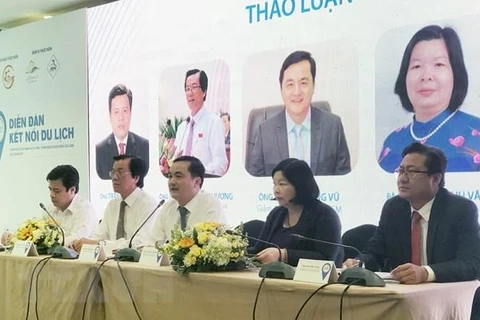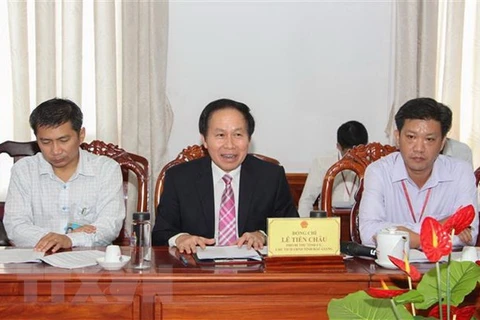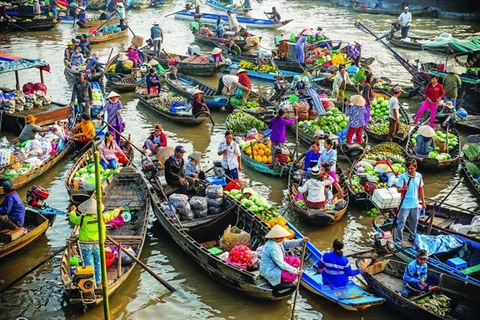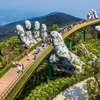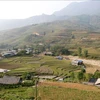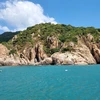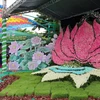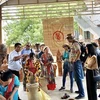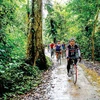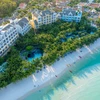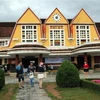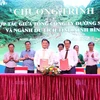Hanoi (VNA) – The Mekong Delta province of Hau Giang has set the goal of attracting one million visitors, including 70,000 international tourists, by 2025, generating 1.4 trillion VND (about 60.6 million USD) in revenues and 4,200 jobs for local residents.
Standing Vice Chairman of the provincial People’s Committee Dong Van Thanh said Hau Giang hopes to become a green agricultural hub in the Mekong Delta. The provincial Party Committee has also issued a resolution exclusively on developing local tourism to 2020 with a vision to 2030.
Based on the resolution, the provincial People’s Committee has designed a plan and implemented a project to restructure the local tourism industry so that it can meet the requirement of becoming a key pillar of the province’s economy.
Under the plan, Hau Giang will be turned into an attractive destination typical of river tourism and eco-agricultural tourism in the Mekong Delta.
The target is to welcome 500,000 visitors in 2020, including 30,000 foreigners. The figure is expected to double by 2025.
Towards the goal, the province has been implementing several key tourism infrastructure projects, such as the eco-tourism site at the Mua Xuan agricultural complex, the Phu Huu eco-tourism and resort site, the Vietnam-Australia Hau Giang and Lung Ngoc Hoang eco-tourism sites, to name just a few.
At the same time, Hau Giang has invested in developing tourism products based on local advantages and strength, such as tours to facilities processing local specialties like pine apple and fish, as well as orchards.
Special attention is paid to the project to restore the Nga Bay floating market and turn it into a key destination for river tours.
Besides tourism infrastructure and tours, Hau Giang has also strengthened state management of tourism, increased promotion activities and improved the quality of tourism human resources, along with raising local communities’ awareness about sustainable tourism development.
The province is expanding cooperation with other provinces and cities in the region to reach more markets and attract more investors in tourism.
Hau Giang has approached a number of companies and investors with strong financial capacity and experience to persuade them to invest in agricultural tourism. Successful models will be then multiplied. The province’s Department of Agriculture and Rural Development also plans to develop models combining smart agriculture and tourism.
Another priority on the province’s tourism development plan is to organize short-term training courses raise awareness and skills in environmental protection and cultural preservation for households and employees involved in tourism.
Hau Giang will promote local tourism using diverse media forms such as television, newspaper and even postal stamps, while maintaining the local tourism website and connecting it with social media platforms such as Youtube or Facebook so that it can reach more visitors and businesses.
Chairman of the Lua Viet travel company Nguyen Van My suggested that Hau Giang build standardized homestay facilities in 2020 and promote its local dishes and specialties at tourism fairs in big tourism hubs like Ho Chi Minh City.
In 2019, the province welcomed an estimated 486,800 visitors, up 16 percent from the previous year. The number of international tourists visiting the province was 24,340, up 45 percent. Tourism revenues totaled 170 billioin VND, a yearly increase of 16 percent.
Hau Giang has many natural advantages for tourism development. It has a vast river system and many rural products such as Cau Duc pineapple, Phu Huu pomelo, and Long Tri tangerine. This is the land of rich cultural and religious life, as three ethnic groups - the Kinh, Khmer, and Hoa live peacefully together.
The province is also known as a land rich in revolutionary tradition with nine revolutionary historical national and cultural sites including Hau Giang Provincial Party Committee Relic, the Southern Uprising relic, Tam Vu relic, and Uncle Ho temple.
Hau Giang also attracts visitors with its luxuriant fruit orchards and poetic yet powerful Xa No Canal which provides alluvial for thousands of paddy fields and is an important water transport route in the region. The province is famous for the Nga Bay, also known as Phung Hiep, Floating Market. From seven branches of Mekong River, hundreds boats gather at the floating market to sell various fruits and other local products.
Nature lovers can also find things of their interest at the Vi Thuy cajuput forest ecological park and Lung Ngoc Hoang Nature Reserve.
Convenient transport is a big advantage for Hau Giang’s tourism development, as it is easily accessed by roads as well as waterways./.

